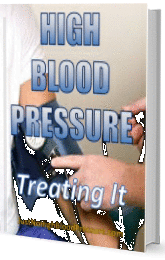Just one more step to review this post
It only requires a free registration
You will have full access to our post archive on High Blood Pressure and Hypertension.
This is a small example of the dozens of posts you will find in our Post Archive.
Also, you will receive a copy of our health report:
Just a sneak peek:
- What Is Blood Pressure, And Why Is It Important?
- What Damage Can High Blood Pressure Cause?
- Heart Attacks And Cardiovascular Disease
- Brain and Kidney Conditions
- Limbs And Eyes
- Medical Treatments For Hypertension
- Diuretics, Beta Blockers, And ACE Inhibitors
- Resistant Hypertension
- Lifestyle And Diet
- Stress Is Literally Killing You…
- Controlling Blood Pressure With Nutrients, Herbs, And Supplements
- Garlic, Hawthorn and Fish Oil
... and many others.
As a bonus, you will receive info on High Blood Pressure treatments, and on other health conditions from our associated sites, such as Acid Reflux, Headaches, Hair Loss, Anxiety, and Insomnia, among others.
Remember, the registration is completely free!
More Info? Access Our Premium Membership Newsletter
Get Our 30-Day Trial
Includes Our Health E-Book Bundle
This is the most updated information:
-
These news are included in our Premium Membership Newsletter on High Blood Pressure. You can have access to them and much more. We will also send you our Health E-Book Bundle as a bonus.
That's correct. We can offer you the latest news on High Blood Pressure, Hypertension, and Cardiovascular Conditions plus additional bonuses.
You Will Receive Our Health Bundle - A Free Bonus With Your 30-Day Trial
It Includes 10 E-Books Valued More Than $150
With your 30-day trial you will receive our E-BOOK BUNDLE, consisting of 10 Health e-Books. It covers health conditions such as depression, better memory, lucid dreaming, reflexology, hypnosis, and more.
You Will Have Access To Our Premium Membership Archive
Includes The Newsletter Topics Previously Sent To Our Premium Members
You will be able to access the topics and articles sent to our members in previous newsletters. This means that the information you will have is not limited to the latest information - you can also check the newsletter archive as a bonus during your 30-day trial.
So, How Much Does The 30-Day Trial Cost?
First, Let's Review What You Get:
Our Health Newsletter With The Most Recent Information On High Blood Pressure
Our Health E-Book Bundle - Includes 10 E-Books With A Total Value Of More Than $150
Access To Our Premium Membership Archive
All For Less Than $1!
Click HERE for more info on the 30-Day Trial
Already familiar with our Health Membership Newsletters?
You can jump directly to the subscription link
You will be redirected to Paypal. $0.95 for the first 30 days. After, $4.95 per month.





